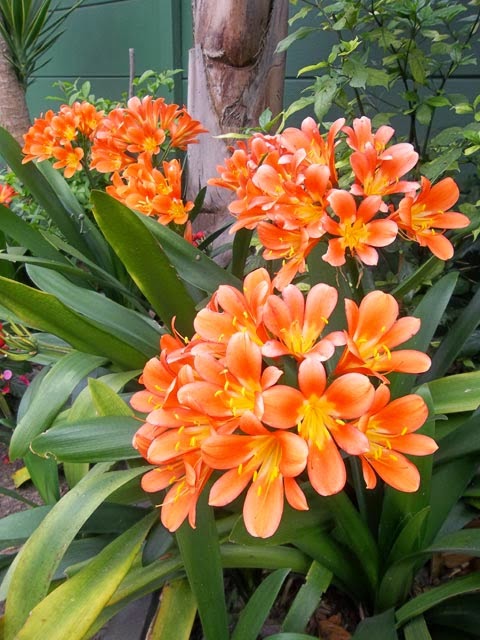

Clivia miniata is also known as the Bush Lily.
This evergreen plant has no bulb, but grows from an underground rhizome with thick, fleshy roots. It grows about 50cm tall and wide (80cm tall while flowering), with long strap-like leaves and trumpet shaped orange flowers. The flowers appear in Spring, mainly August and September.
Clivia miniata is native to South Africa, growing from the Eastern Cape to KwaZulu-Natal, Mpumalanga and Swaziland. It grows in large colonies in the dappled shade of subtropical forests. Sun damages the leaves and makes them turn yellow and sickly, so Clivias should be planted in the shade. It requires well drained soil with compost and will benefit from liquid fertilizer in Summer (although it will usually grow fine without the fertilizer). The soil should be covered in a thick layer of mulch. As this Clivia originates from summer-rainfall areas of the country, it should be watered in Summer (about once every 2 weeks) and kept dry in winter. It does fine in Cape Town's wet winters though, provided that it's not planted in a boggy area of the garden.
This bulb also grows well in containers and can be used as a house plant. It flowers well when pot-bound and the container should be allowed to dry out between waterings. The leaves can be wiped with a damp cloth if they get dusty in the house.
Clivias are poisonous and should not be eaten or used in any home-made herbal concoctions!
Clivia miniata can be propagated by division or seeds. The seeds are ripe when the fruit turns bright red. Remove the pulp and skin around the seed and sow immediately, while it is still fresh. The seed should not be buried too deeply - the top should be flush with the soil surface. It will germinate after about a month and the seedlings will need several years before they are large enough to plant out in the garden. As the seedlings grow slowly, dividing a clump of Clivias is a much faster method of propagation. Simply divide the clump with a spade and plant immediately. (Note that dividing a clump may cause the plant to not flower for up to 2 years.)